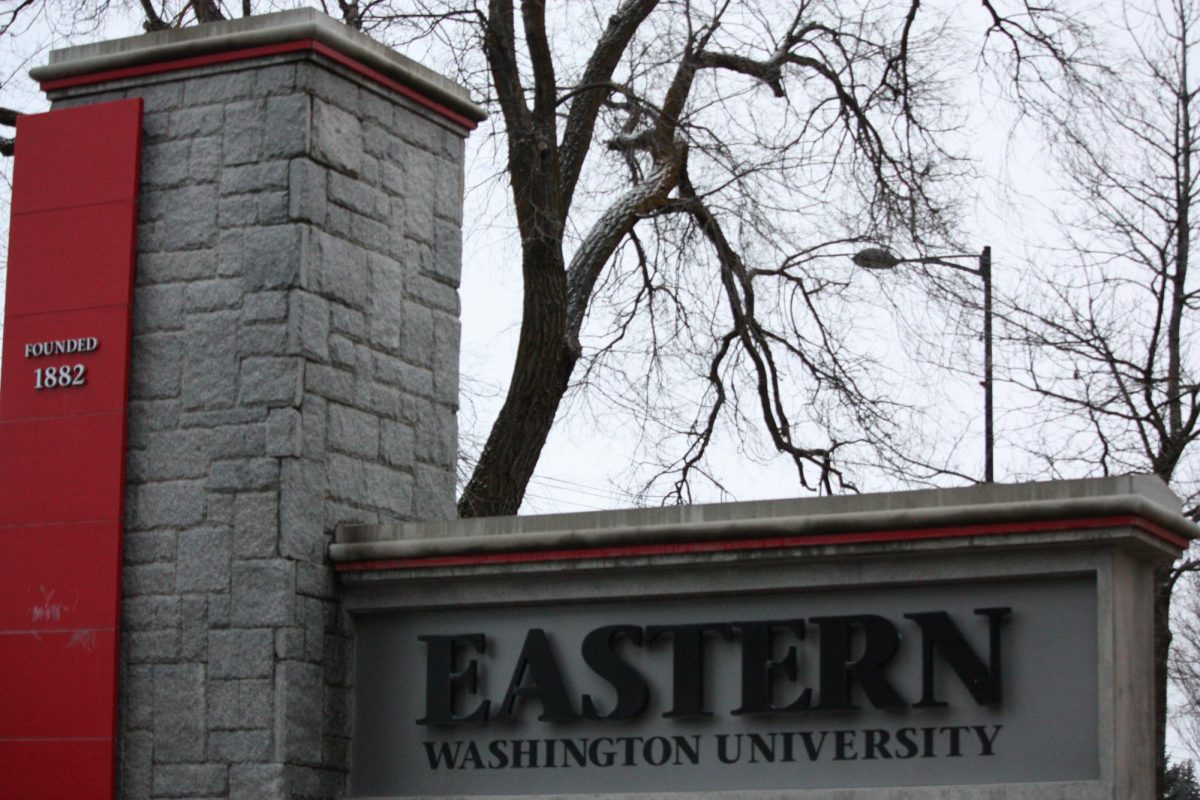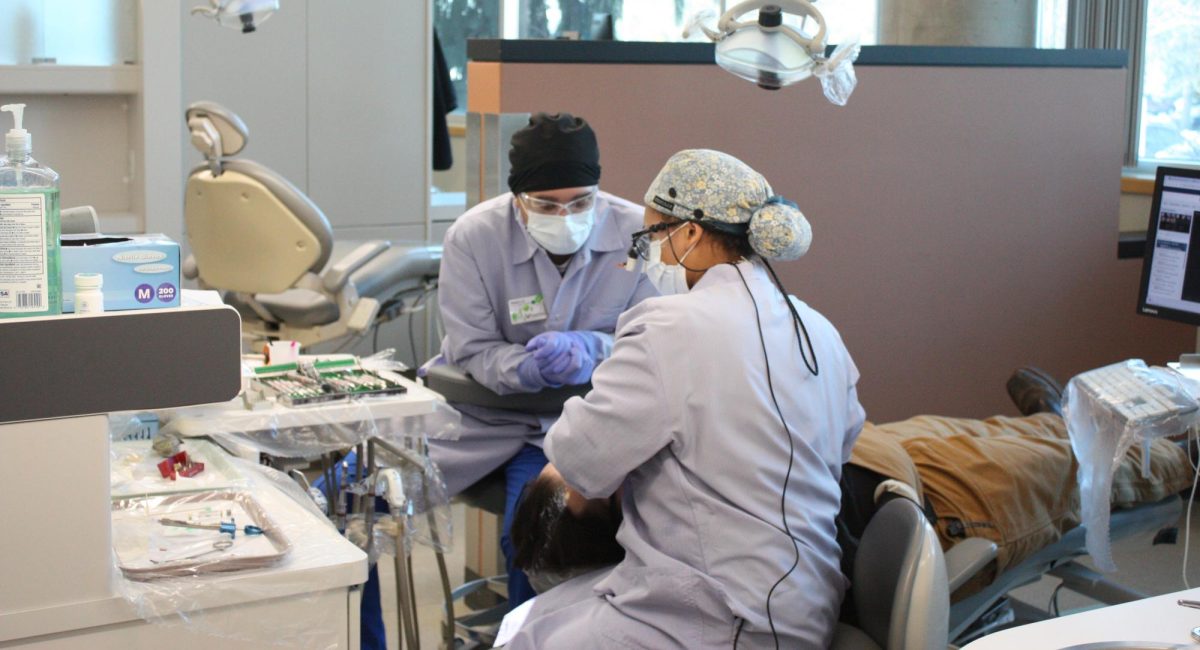Easterner’s new EIC strives forward
Goals include more online content, suggestions from students
June 7, 2015
Hello, Eastern. I am the new editor-in-chief of The Easterner.
First, I would like to say that it has been an insane year at The Easterner. We have had many ups and downs but we made it to the last issue, the one you are reading today.
As chief copy editor I have seen and read every article that has been printed in the paper, from the light-hearted ones to the controversial ones that started conversations around campus. I stand behind everything we have printed. While I admit some mistakes were made, The Easterner is a place to learn, and we have done just that.
As editor-in-chief for Volume 67, I will take what I have learned and apply it to The Easterner for next year. My plan is to focus more on government — the ASEWU and the board of trustees — on campus. As students, we have a right to a transparent campus government, and The Easterner will be an outlet for that.
To say print is dying is an understatement. This year The Easterner saw more and more viewership on our online site, especially mobile. As the year went on, I saw that as the online readership went up, the more physical papers came back to the newsroom.
I have heard your message and because of it I will be pushing for more focus on our online site and will be incorporating multimedia including video, soundbites and interactive graphics. The news on our site will be up to date and timely, and readers will see a more comprehensive sports section where scores will be added as soon as we get them.
The physical paper will focus on lengthier news and feature stories and a more student-centered opinion section.
I am excited to start the 2015-16 year but before it ends, I would like to thank Nicole Ruse, Volume 66’s editor-in-chief.
Nicole, we’ve been through a lot with this paper and staff. Through it all you have been there for support when I was down, stressed out and just wanting to give up. You’ve listened to me vent, gave advice and helped me grow to be the editor I am today. I won’t forget the fun times we had together and the laughter we shared. I’m going to miss being a chair-roll away from you, but I get to take over your office, so it won’t hurt too bad. Good luck out there, I know you’ll do amazing with whatever job you get. And remember to ask yourself, “What would Baby Magugu do?”
To the community, I hope that I can serve you in the best way possible next year. Please do not shy away from emailing, calling or stopping by if you have any questions, concerns, and suggestions.
Thank you for your continuous support and please enjoy your summer.
Eric Long








John D. Hensley, Cheney Chief of Police • Sep 3, 2015 at 9:54 am
The Cheney Police Department (CPD) is a small, but professional police agency, staffed with caring and compassionate public safety professionals. For several years, the CPD has been a state accredited police department and serves as a model to others in this area. However, behind this façade of excellence and exceptional service, the CPD suffers from a lack of funding support in several key areas. As I near the completion of my fourth year as your chief of police, I find myself examining the state of the police department. Frankly, I am concerned about the future of public safety in our city. With a decade of state funding takeaways, and a slow in recovering economy, public safety which relies upon the City’s general fund has been hit particularly hard in five areas – staffing, vehicles, technology, training, and facilities.
The Cheney Police Department is staffed with 14 police officers to patrol a city that has a day time population of an excess of 24,000. Cheney has the fewest police officers for a city of its size (full-time population of 11,251) in the state of Washington. We would need to add an additional 4 officers to move up to the next city on the bottom of this list.
This is the staffing problem as I see it – police officers should never work alone in this day and age. Our society has become far too dangerous and complex to rely upon one police officer per shift to sort through the labyrinth of issues which arise each day. We would not expect a firefighter to tackle calls for help alone or light department employees to climb utility poles without the benefit of assistance. Why then is it acceptable to allow police officers to patrol city streets alone on some shifts without the benefit of a back-up officer? Moreover, there are times, an officer has a domestic violence call, a suicidal person, traffic collision, or a theft in progress occurring at the same time. How then can an officer meet these demands when working alone? The honest answer is that they can’t.
The police department has 6 vehicles assigned to patrol. Three vehicles are leased and are model year 2012. They are in rather good shape, but the miles are piling up quickly. The other 3 patrol vehicles are model years 2008 and 2009 high mileage cars with maintenance issues. These emergency vehicles are tired and in need of immediate replacement. The challenge for our city is that a fully outfitted police patrol vehicle costs $43,000, but the general fund is unable to meet the high cost of vehicle replacement.
In terms of computer technology, computers in police cars are essential. Police work demands the use of computers, from writing police reports, searching for crime related intelligence, to writing a speeding ticket. CPD computers installed in the police vehicles are over 5 years old and the company that built them is no longer in business. Each day these computers are routinely failing/crashing, but replacement of these computers as well as docking stations is estimated to be in the neighborhood of $90,000. Again, the general fund cannot afford to support replacement at this time or in the foreseeable future.
Each year, the state mandates 24 hours of police officer training and continuing education. The City is able to meet this basic need. The difficulty however, is in the areas of weapons training, defensive tactics, and other specialized training that is needed in which the state does not always provide at a cost that the City can afford. A professional and well-trained police department is essential to providing public safety services to our community – you deserve nothing less, but increased funding for training beyond the basics is unattainable under present economic conditions.
Finally, the police facility is a converted mortuary well over 50 years old and while it meets the rudimentary needs of the community and officers alike, it has several issues. The locker rooms lack hot water, there are electrical, HVAC issues, and the building is not technology friendly. In terms of space, the building lacks storage space for evidence and property and the building is without meeting or training space. Frankly, the entire police facility needs work and funding to do so is nonexistent.
By now, I suppose you’re asking yourself, what’s the chief’s point? Money’s always a problem, we all know that… My point is simply that through no fault of our local leaders the City’s general fund cannot support the needs of the police department. The loss of various funding streams – liquor tax and profits, motor vehicle excise tax, reduced sales tax receipts, etc. — have hurt the City’s ability to meet increasing public safety demands. Other funding options must be considered if we are to address the unfortunate facts I’ve presented here.